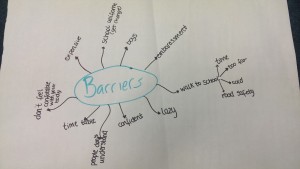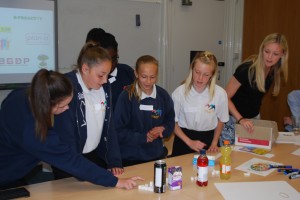 David Berridge, Professor of Child and Family Welfare at the School for Policy Studies, considers the process of making an impact on policy and practice by discussing his research on looked after children.
David Berridge, Professor of Child and Family Welfare at the School for Policy Studies, considers the process of making an impact on policy and practice by discussing his research on looked after children.
It is interesting, and advisable, at the completion of a research project to reflect on how it went. There can be a tendency to delay this process, encouraged by feelings of relief as well as no doubt the need to catch-up with other responsibilities that are now overdue.
These thoughts were with me at the end of 2015 on the conclusion of our joint-research with the Rees Centre, University of Oxford, funded by the Nuffield Foundation, on the Educational Progress of Looked After Children in England. We were certainly pleased to complete what for us was a major piece of work. There were many challenges in the work (to borrow a well-used euphemism), including: obtaining and analysing large government databases; negotiating access to six contrasting local authorities; contacting groups of older teenagers in care, their social workers, carers and teachers; obtaining and analysis large amounts of qualitative data; and writing-up the results.
Social researchers are familiar with these processes, with varying degrees of success. But we also give particular attention to the dissemination of research and trying to ensure that it impacts on the worlds of policy and practice. These stages need proper planning throughout the research process, not just at the end.
We were certainly pleased with our research results, which we feel contain important, new messages. Comparing large groups of children in care who took their GCSEs in 2013 with ‘children in need’ (receiving social work support at home) and the wider pupil population, we found that, once controlling for a wide variety of factors, those in care (particularly foster care) made greater educational progress than did children in need. This is despite, one would assume, having less acute problems. Generally, therefore, the care system appears to operate as an educational protective factor.
This is a new message as commentators in the past have generally focused on the often disappointing attainments of young people in care (exam/test results etc), rather than their educational progress after becoming looked after – an important distinction. Indeed, there was an overwhelming view from the young people interviewed that leaving home and entering care had benefited them educationally. Furthermore, it was mainly late adolescent entrants to care who experienced particular educational problems. Clearly, we should not overlook that high attainment is important and our research is intended to contribute to this by a detailed examination of the nature of the problem and its causes.
Other important findings include that children’s emotional and behavioural problems often underlie educational difficulties. Taking into account pupil variation and school effectiveness, there was little difference between Councils in the educational progress of children in care. Responses of school and care systems were important, including the level of stability provided. Nonetheless, this questions aspects of a ‘league table’ approach and of the OFSTED inspection framework. Other results are available on the website, including the individual technical reports.
We were grateful that the Minister for Children and Families, Ed Timpson MP, spoke at our launch event at the Nuffield Foundation. He concluded his speech by repeating the statement made by Robbie Gilligan earlier in the day, that we need to move ‘…from the narrative of failure to the narrative of potential’. This is an important observation and it is interesting to reflect on what it means and its implications. The statement is ambiguous. On the one hand it could be referring to the fact that we should not label individual children in care as unintelligent or incapable, as their school performance has been hampered by their social and emotional development and poor parenting. On the other, the ‘narrative of potential’ comment could denote the need to recognise that the care and school systems makes positive progress with these disadvantaged pupils, especially when there it a reasonable period of time for there to be an effect. The statement could have both micro and macro meanings; although for me ‘narrative’ usually has broad application.
In his autumn 2015 Conservative Party conference speech the Prime Minister referred to the poor outcomes for children in care: ‘These children are in our care; we, the state, are their parents – and what are we setting them up for…the dole, the streets, an early grave? I tell you: this shames our country and we will put it right’.
A fortnight after the launch of our research the Prime Minister announced further proposals to take over failing local authority children’s services: reported to be as transformative a policy as the Academisation programme in the last Parliament. It is unclear if children’s services’ failures relate specifically to child protection and child tragedies, to poor outcomes for children in care, or to both. The Prime Minister’s conference speech located it in a section on entrenched family poverty.
Reform of children’s services, therefore, is signalled as a flagship policy for this Conservative administration. We hope that our research findings, and other sources of evidence, are allowed to contribute to this debate: to help pinpoint the exact nature of child welfare problems, their complexity and the effectiveness of responses. It will be interesting to see if a narrative of potential or a narrative of failure will be maintained 2016.







